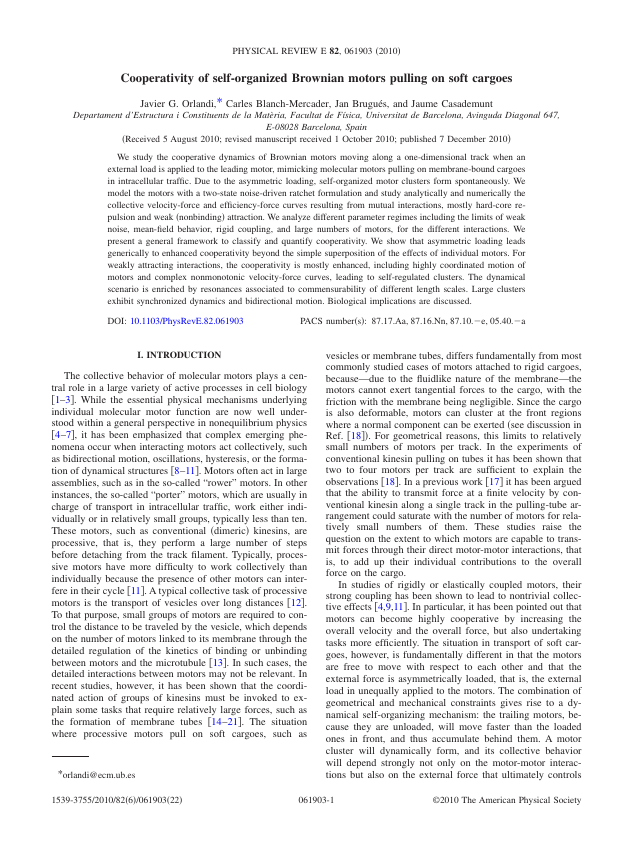J. G. Orlandi, C. Blanch-Mercader, J. Brugués and J. Casademunt
Phys. Rev. E 82, 061903 (2010)
Abstract:
We study the cooperative dynamics of Brownian motors moving along a one-dimensional track when an external load is applied to the leading motor, mimicking molecular motors pulling on membrane-bound cargoes in intracellular traffic. Due to the asymmetric loading, self-organized motor clusters form spontaneously. We model the motors with a two-state noise-driven ratchet formulation and study analytically and numerically the collective velocity-force and efficiency-force curves resulting from mutual interactions, mostly hard-core repulsion and weak (nonbinding) attraction. We analyze different parameter regimes including the limits of weak noise, mean-field behavior, rigid coupling, and large numbers of motors, for the different interactions. We present a general framework to classify and quantify cooperativity. We show that asymmetric loading leads generically to enhanced cooperativity beyond the simple superposition of the effects of individual motors. For weakly attracting interactions, the cooperativity is mostly enhanced, including highly coordinated motion of motors, and complex non-monotonic velocity-force curves, leading to self-regulated clusters. The dynamical scenario in enriched by resonances associated to commensurability of different length scales. Large clusters exhibit synchronized dynamics and bidirectional motion. Biological implications are discussed.
